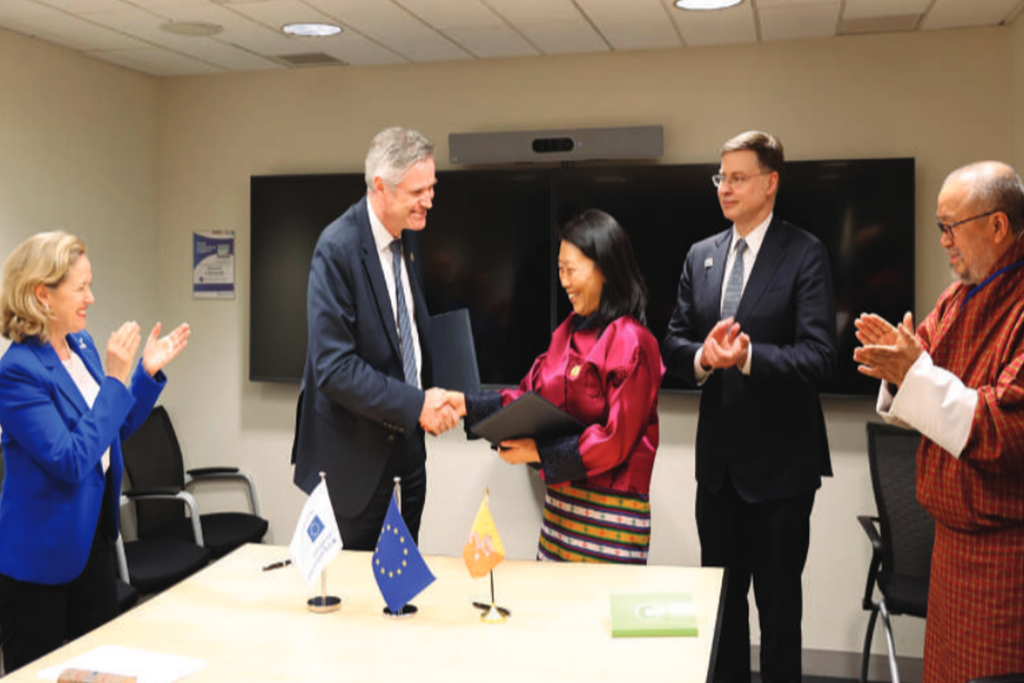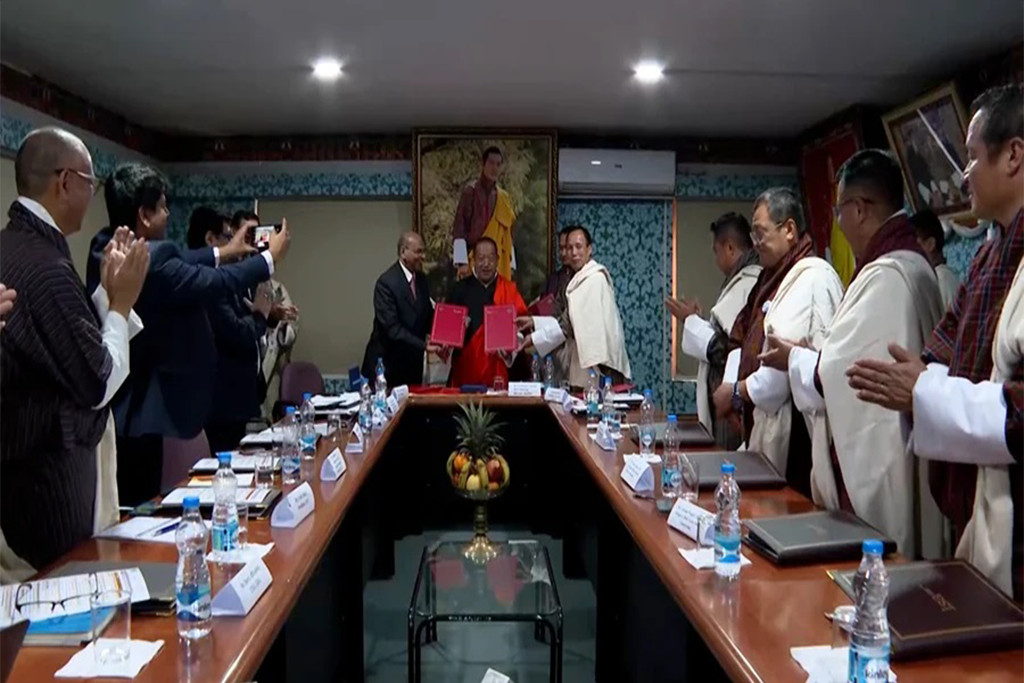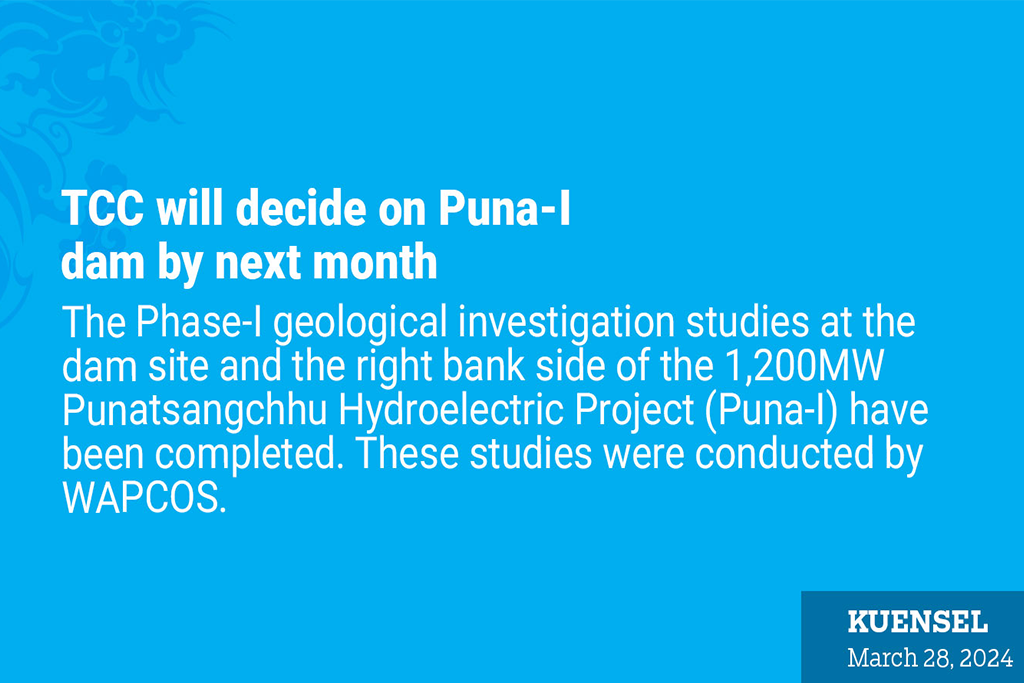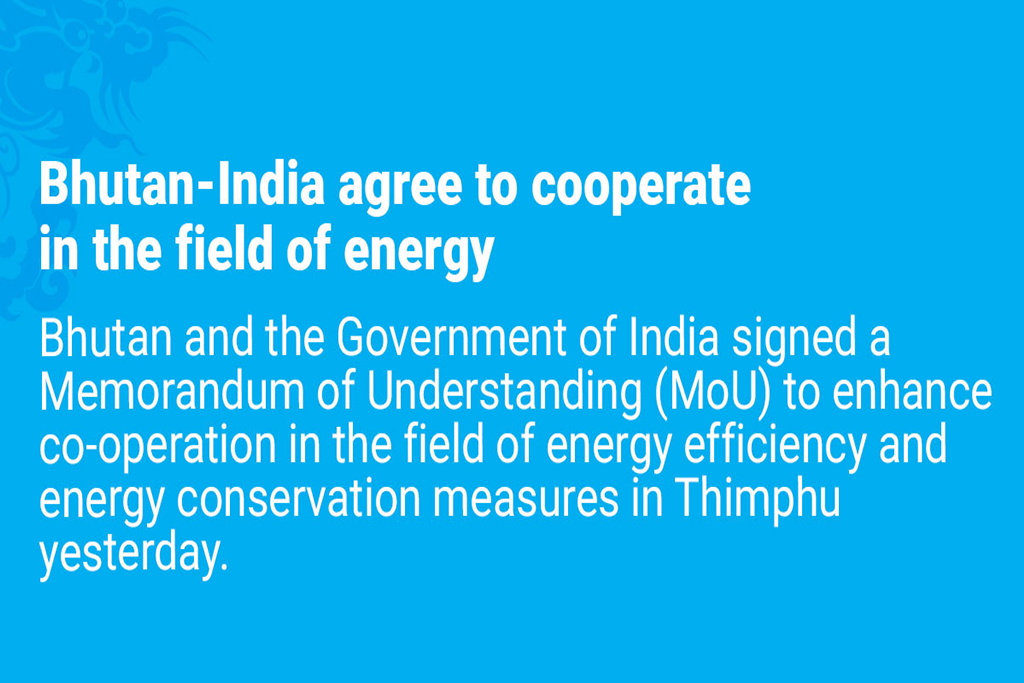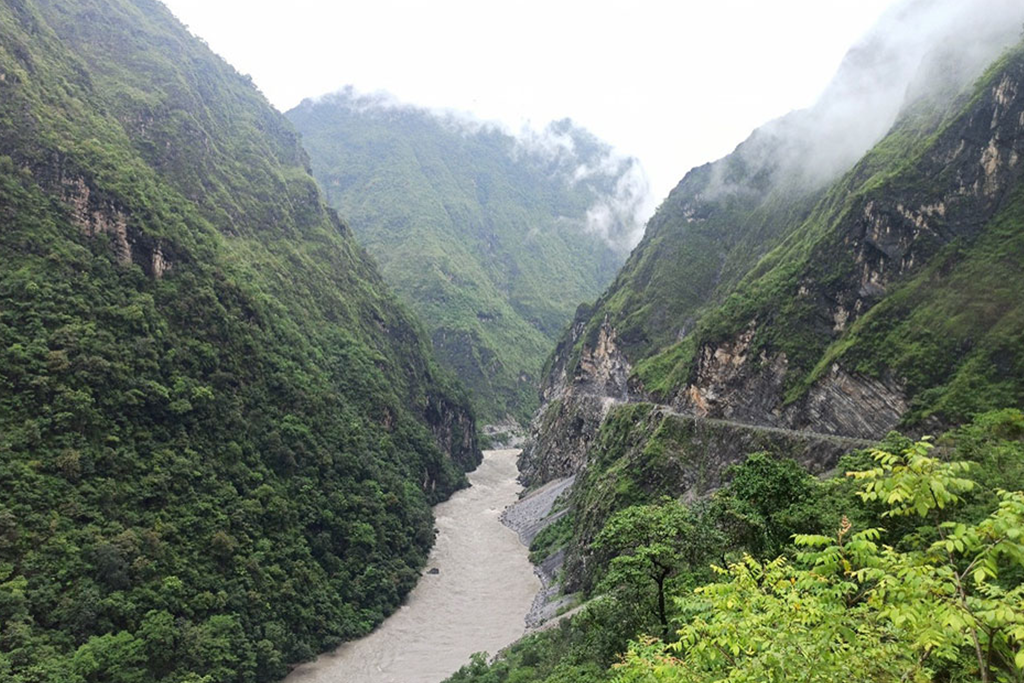Joint Study finds multiple fractures in Right Bank of Punatsangchu I
The Bhutanese | Tenzing Lamsang | June 8, 2024
Last year Bhutan and India agreed to drill multiple rock samples into the right bank area to check for its stability to see if a dam is feasible or not.
Currently the joint Technical Coordination Committee with member from both sides has not finalized its report.
However, there are two reports submitted based on the same rock drilling samples with one report submitted by the Indian team and another report by the Bhutanese group.
The two sides are supposed to sit together and finalise a final report on whether the dam should go ahead or not.
The Joint Technical Committee has six experts each from both sides. The reports are being reviewed and it is yet to be finalized.
The report from the Indian side has been compiled by Central Water Commission, WAPCOS and Geological Survey of India.
On the Bhutanese side the Druk Green Power Corporation, Department of Energy and Department of Geology and Mines have studied and compiled the report.
The same rock samples have been studied by both sides. The rocks show fractures along the whole right bank in lots of places where boreholes have been done.
On the Bhutanese side the main focus is on the need for a thorough mitigation and right bank stability and the dam is not even being discussed before that.
“From the Indian team, we need to hear about the mitigation measures and for them to tell us to not worry and that they will care of everything and then we will go ahead,” said a source.
“From the Indian side, they are accepting that that there are now problems and now they are all saying one thing.”
“They are saying meantime we go ahead with the dam which we are not agreeing with as we want mitigation measures in place.”
After the Joint Technical Committee finishes its works the PHPA Authority will take the final call.
Background
Earlier an expert committee that had been set up by Bhutan and the Government of India (GoI) were unable to agree on the future course of the 1,200 MW Punatsangchu-I, with the Bhutanese side insisting on a barrage due to safety concerns over the dam site, and the Indian side insisting that the dam can be done at the dam site.
The Bhutanese side softened its stance in 2023 and has agreed to do a set of geo technical investigations on the right bank area and the dam site near it.
The findings are to look at the geological conditions.
Based on these geological conditions the next stage will be to see if a dam can be built there and also what are the additional stabilization measures that are required.





